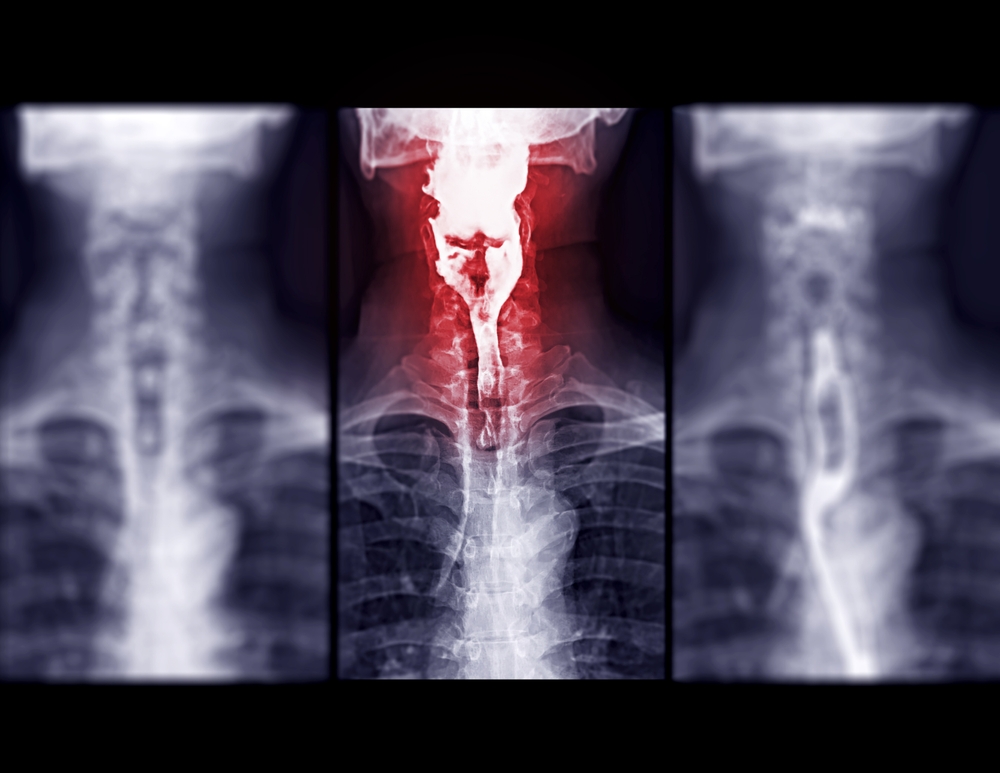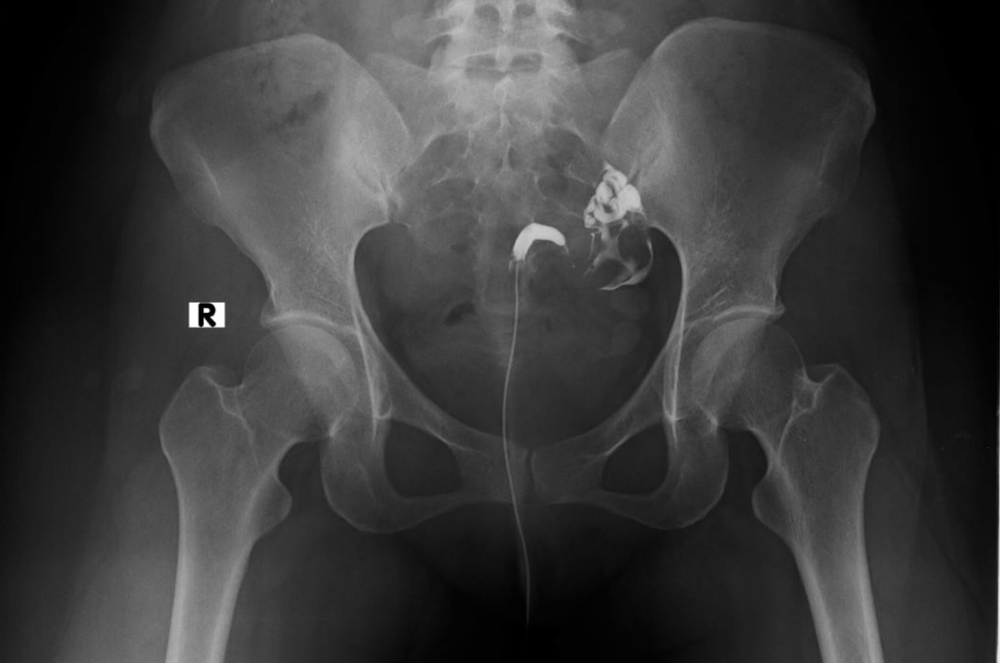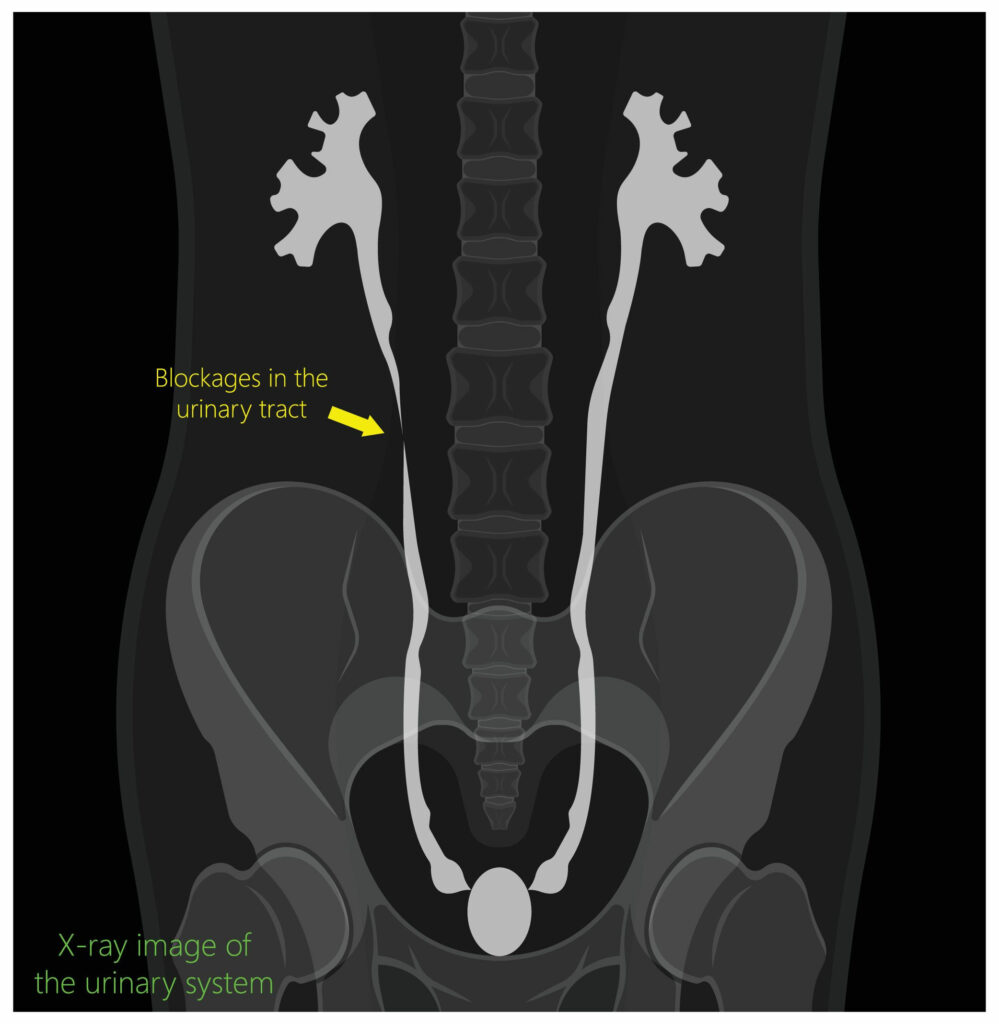Good to know
What are X-rays?
Since their discovery in 1895 by the German physicist Wilhelm Roentgen, X-rays have played a major role in helping physicians diagnose and treat disease. X-rays are high-energy electro-magnetic waves created within an x-ray tube.
They are highly penetrating, and in combination with computer imaging plates, provide images of various internal organs and structures.
Your physician and the radiologist combine to provide you with the test best suited to your particular situation. While all radiation exposure carries some risk, the benefits of diagnosing your condition far outweigh these risks.
However, due to these risks, X-ray examinations are carried out by trained, licensed personnel and interpreted by physicians (radiologists) who are specially trained in the imaging sciences.
Pueblo Radiology's X-Ray Services
Quick Navigation
GI Studies (Barium)
The prep for an UGI is found in our appointment prep section. During your exam, the radiologist uses a TV-like x-ray device (fluoroscope) to watch the barium travel down your esophagus (“food pipe”) and into your stomach and small bowel (intestine).
The radiologist will take pictures of the various structures of your GI tract as he/she instructs you to turn from side-to-side.

Esophagram or Barium swallow AP view Compare after the patient drinks a liquid that contains barium showing esophagus.
FAQ
Most frequent questions and answers
You will be given some crystals and a small amount of water; you will be instructed to swallow the crystals with the aid of the water. Following this, you will be given a cup of barium to drink. The radiologist will instruct you when to drink the barium as he/she watches through a TV-like device. The doctor will examine your swallowing mechanism as well as the various parts of your stomach and take pictures as appropriate. The exam will begin with you standing and then a motorized table will tilt you down to a recumbent position. During the exam, you will be instructed to roll/move to your right and left sides.
The barium will pass through your bowels over the course of a few days. It is important that you drink fluids during this time to help the barium pass through your system. Your stools may be lighter in color for several days.
Barium is a very dense material that allows your GI tract to be visualized with x-rays. In liquid form, barium is the consistency of a thinned milkshake and has no particular flavor. The vast majority of patients tolerate barium well.
Barium studies are typically done in 30 minutes or less.
Barium enemas (BE) are done when there is a suspicion of bowel disease or obstruction. Symptoms of abdominal pain, rectal bleeding, or bloody stools are all indicators for a BE.
Flexible rubber-like tubing is inserted into your rectum. After that, barium fluid is put into your large bowel (intestine) and a radiologist watches the filling through a TV-like x-ray device (fluoroscope). The radiologist will turn you from side to side and gently press on your abdomen. During the filling process, pictures will be taken of the various parts of your large intestine. Once all the necessary images have been acquired, the barium will be drained back into the original barium bag.
The barium will continue to pass in your bowel movements over the course of a few days. It is important that you drink fluids during this time to help the barium pass through your system. Your stools may be lighter in color for several days.
Hysterosalpingography
Hysterosalpingography is a test to determine whether a woman’s Fallopian tubes are open, as well as if there is any disease in her uterus. Many times, a hysterosalpingogram is done when a woman is having a difficult time getting pregnant.

Hysterosalpingography unicornuated uterus women radiology
FAQ
Most frequent questions and answers
Contrast material (dye that shows up on x-ray) is injected into the uterus through tubing that is inserted through the cervix by the woman’s gynecologist or a Pueblo radiologist. The contrast is viewed with a TV-like device (fluoroscope) while the uterus is filling. Ultimately, in cases of infertility, the goal is to have the contrast material “spill” into the woman’s abdominal cavity, confirming that her fallopian tubes are open (patent).
The contrast material is sterile when injected, and that which spills is naturally absorbed in the abdomen and excreted in the urine. The patient will see no change in urine color or consistency.
When the exam is completed, the catheter is removed and the patient is dismissed. Since residual contrast may continue to seep down from the uterus and you may have some spotting, it is recommended that you wear a pad for a few hours following the test. Normally, no sedation is given for a hysterosalpingogram so you can drive home.
This test is a relatively painless examination.
It will not influence your ability to become pregnant; in fact, it is not uncommon for a woman, who was previously having trouble becoming pregnant, to get pregnant following this test.

What is...
Urinary Tract Studies
An IVP is a study of the kidneys and bladder and the tubes connecting them called the ureters. An injection of contrast material (dye) is made into a vein in your arm. The contrast material collects and is filtered in your kidneys and ultimately drains down the ureters into your bladder. X-ray films are obtained at various timed intervals following the contrast injection.
What happens to the dye?
It is excreted normally in your urine. As the contrast is mostly clear, you will notice no color change in your urine.
What is a cystogram?
A cystogram is a test where contrast material (dye) is put into your bladder through a catheter (soft, flexible tubing) placed in your urethra. If the urethral catheter is not in place, we will put it in prior to the test. The contrast material will fill your bladder and the radiologist will take pictures of the process. Once the imaging is complete, the dye will be drained out of your bladder.
What is a Voiding Cystourethrogram (VCU)?
This is a test of the bladder and the urethra. This test is done when there is a suspicion of disease or abnormality in the mechanism that allows the bladder to empty (voiding / urination). A catheter (soft, flexible tubing) is put into the patient’s bladder through the urethra. The bladder is filled while the radiologist watches the process with a TV-like viewing device (fluoroscope); the radiologist takes pictures at this time. Once the bladder has filled, the catheter is removed and the patient is encouraged to urinate while the radiologist watches and takes pictures of the contrast material moving through the aforementioned structures.
Pueblo Radiology's X-Rays Specialists

Gary Blum, MD
Medical Director, Santa Barbara Office

Jason Barksdale, MD
Radiologist at Pueblo Radiology

Jacob Harter, MD
Radiologist at Pueblo Radiology

John Wrench, MD
Radiologist at Pueblo Radiology


